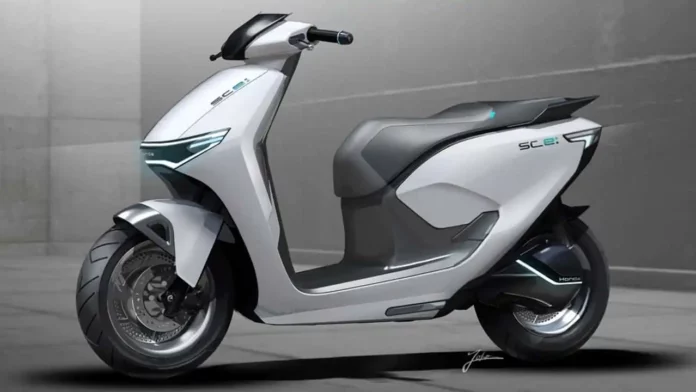As the world moves towards a more sustainable future, Honda, a global leader in the automotive industry, is making significant strides by transitioning from internal combustion engine (ICE) two-wheelers to a fully electrified lineup. This ambitious plan is set to revolutionize the way we think about personal mobility. Honda’s electrification strategy aims not only to reduce emissions but also to provide efficient and reliable transportation solutions for the future.
Honda’s Electrification Strategy: A New Era of Mobility
Honda’s Commitment to Sustainability
Honda has always been at the forefront of innovation, and their recent announcement to discontinue ICE two-wheelers globally is a testament to their commitment to sustainability. By focusing on electric vehicles (EVs) and fuel cell electric vehicles (FCEVs), Honda is paving the way for a greener and more efficient future.
The Roadmap to Electrification
Honda’s roadmap includes launching 10 new electric two-wheelers globally by 2025. This aggressive strategy is designed to meet the growing demand for EVs and achieve an annual sales target of one million electric vehicles by 2026. By 2030, Honda aims to increase this number to 3.5 million units, solidifying their position as a leader in the electric mobility space.
Building the Future: Infrastructure and Technology
Developing Solid-State Batteries
One of the biggest challenges in the EV industry is battery technology. Honda is investing heavily in the development of solid-state batteries, which promise to deliver higher energy density, faster charging times, and longer lifespan compared to traditional lithium-ion batteries. This advancement will be crucial in making EVs more practical and appealing to a broader audience.

Expanding Charging Networks
To support the widespread adoption of electric two-wheelers, Honda is also focusing on building a robust charging infrastructure. This includes the establishment of charging networks across key markets, ensuring that EV owners have easy access to charging stations wherever they go.
Battery Swapping Networks
In addition to conventional charging stations, Honda is exploring the potential of battery swapping networks. This innovative approach allows EV owners to quickly swap depleted batteries for fully charged ones, significantly reducing downtime and making electric two-wheelers more convenient for daily use.
Honda’s Electric Two-Wheelers: What to Expect
The Upcoming Activa Electric
One of the most anticipated models in Honda’s electrification plan is the Activa Electric. Known for its reliability and popularity, the Activa has been a top choice for scooter enthusiasts in India. The electric version is expected to carry forward the legacy of its ICE counterpart, offering an eco-friendly alternative without compromising on performance or convenience.
India-Specific Electric Two-Wheelers
Recognizing the unique needs of the Indian market, Honda is also working on developing more India-specific electric two-wheelers. These models will be tailored to meet the demands of Indian consumers, focusing on affordability, durability, and efficiency. Details about these models are expected to be revealed soon, generating excitement among potential buyers.
The Impact on the Market: A Shift in Consumer Preferences
Growing Demand for Electric Vehicles
The global push towards sustainable transportation has led to an increase in demand for electric vehicles. Consumers are becoming more environmentally conscious and are actively seeking out cleaner alternatives. Honda’s commitment to electrification is likely to resonate well with this growing demographic, driving higher sales and market penetration.
Competitive Advantage
By taking an early lead in the electrification race, Honda is positioning itself ahead of its competitors. The extensive range of electric two-wheelers, combined with a strong support infrastructure, will give Honda a significant competitive advantage in the market.
Challenges and Opportunities
Overcoming Initial Hurdles
Transitioning from ICE to electric two-wheelers is not without its challenges. Initial hurdles such as high development costs, limited charging infrastructure, and consumer skepticism need to be addressed. However, Honda’s proactive approach in investing in technology and infrastructure is likely to mitigate these challenges over time.
Opportunities for Innovation
The shift towards electrification opens up numerous opportunities for innovation. From advanced battery technology to smart connectivity features, there is a vast potential for Honda to explore and enhance the overall riding experience. The integration of IoT and AI in electric two-wheelers could lead to smarter, safer, and more efficient vehicles.
Honda’s Vision for 2040: A Fully Electrified Lineup
Achieving a Sustainable Future
Honda’s vision for 2040 is ambitious yet achievable. By completely transitioning to electric and fuel cell vehicles, Honda aims to contribute significantly to reducing global carbon emissions. This move aligns with global efforts to combat climate change and promote sustainable living.
Long-Term Benefits
The long-term benefits of Honda’s electrification strategy are manifold. Reduced reliance on fossil fuels, lower emissions, and decreased environmental impact are just a few of the positive outcomes. Additionally, advancements in EV technology will lead to better performance, increased range, and lower operating costs for consumers.
Conclusion: Embracing the Electric Revolution
Honda’s decision to discontinue ICE two-wheelers and focus on electrification marks a significant turning point in the automotive industry. As we move towards a more sustainable future, the adoption of electric vehicles will play a crucial role in shaping the way we travel. Honda’s comprehensive strategy, from developing cutting-edge battery technology to building a robust support infrastructure, sets a strong foundation for this transition.
The upcoming launch of electric models, including the highly anticipated Activa Electric, will undoubtedly generate excitement among consumers and drive the adoption of EVs. By addressing the challenges and leveraging the opportunities presented by this shift, Honda is well-positioned to lead the electric revolution and set new standards for the industry.
As Honda embarks on this journey towards a fully electrified lineup by 2040, it is clear that the future of mobility is electric. With their innovative approach and unwavering commitment to sustainability, Honda is not just keeping up with the times but is actively shaping the future of transportation.
So, whether you’re a long-time Honda enthusiast or a new customer looking to make the switch to electric, there’s never been a better time to embrace the electric revolution. Stay tuned for more updates on Honda’s electrification journey and get ready to experience the future of mobility today.


































